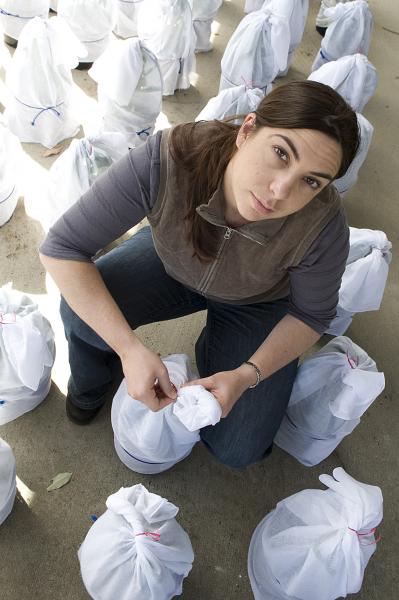| Publication Type | Journal Article [4] | |
| Year of Publication | 2012 | |
| Authors | Renton, M. [5] | |
| Journal Title | Pest Management Science |


| Publication Type | Journal Article [4] | |
| Year of Publication | 2012 | |
| Authors | Renton, M. [5] | |
| Journal Title | Pest Management Science |
| Publication Type | Journal Article [4] | |
| Year of Publication | 2009 | |
| Authors | Darby, J.A [9]; Willis, T. [10]; Damcevski, K. [11] | |
| Journal Title | Pest Management Science | |
| Pages | 982-990(9) | |
| Publisher | John Wiley & Sons [12] | |
| DOI | DOI 10.1002/ps.1783 |
This project aims to develop mathematical models to investigate the emergence of resistance to fumigants, particularly phosphine based fumigants. A particularly important aspect is the possibility that resistance is directly influenced due to the migration of resistant stored grain insects from silos to and from surrounding farmland, where they breed with non-resistant insects. Computer software will be developed to assess different fumigation strategies with the aim to reduce (or eliminate) resistance, taking into account ecological data on movement of insects to surrounding farmland.
Phosphine is the most common fumigant used today to treat stored grain infestations. Resistance to phosphine is a major threat to the grain industry and inadequate fumigation strategies may result in infestations of resistant insects that are difficult to control. Grain borers tend to reach unnaturally high population numbers due to mass storage of grain food. There is a need to understand the impact of refuges on the emergence of resistance.
Grain handling companies and farmers will have a fumigation management tool (as computer software) that will help them decide the most effective fumigation management strategies.

This project will assess the toxicity of reduced risk insecticides against a range of commercially available biocontrol agents for use in integrated pest management programs by the horticultural industry.
If exotic pests become established in Australia, it may be possible to initially base IPM on biocontrol agents available in Australia.

Jessica Harrison doing trials in the field.

Links:
[1] http://legacy.crcplantbiosecurity.com.au/publications/npb1866
[2] http://legacy.crcplantbiosecurity.com.au/program/preparedness-and-prevention
[3] http://legacy.crcplantbiosecurity.com.au/program/preparedness-and-prevention/project/crc10124-forecasting-spread-rapid-response
[4] http://legacy.crcplantbiosecurity.com.au/publications/research/type/102
[5] http://legacy.crcplantbiosecurity.com.au/publications/research/author/Renton
[6] http://legacy.crcplantbiosecurity.com.au/publications/npb1204
[7] http://legacy.crcplantbiosecurity.com.au/program/post-harvest-integrity
[8] http://legacy.crcplantbiosecurity.com.au/project/crc50059-fumigation-technology
[9] http://legacy.crcplantbiosecurity.com.au/publications/research/author/Darby
[10] http://legacy.crcplantbiosecurity.com.au/publications/research/author/Willis
[11] http://legacy.crcplantbiosecurity.com.au/publications/research/author/Damcevski
[12] http://legacy.crcplantbiosecurity.com.au/publications/research/publisher/John+Wiley+%2526+Sons
[13] mailto:j1.thorne@student.qut.edu.au
[14] http://legacy.crcplantbiosecurity.com.au/bio/thornej
[15] http://legacy.crcplantbiosecurity.com.au/bio/harrisonj